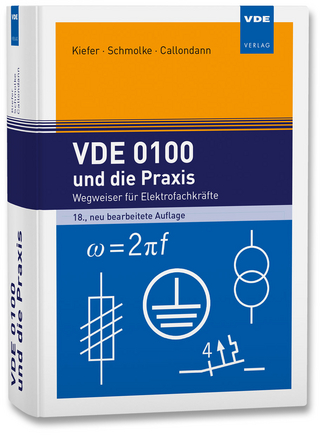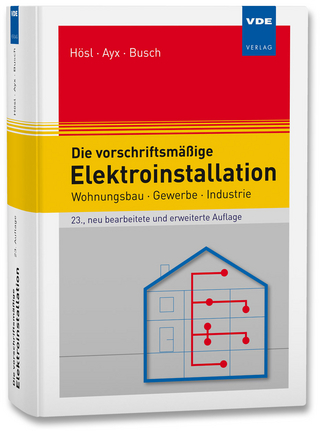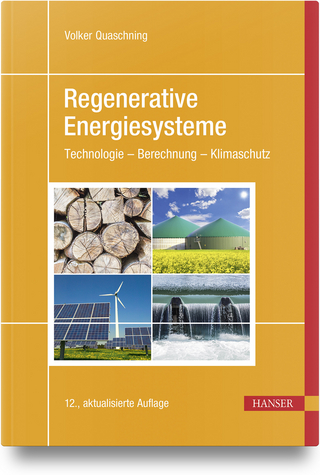
Diagnosis and Fault-tolerant Control Volume 2
Iste Ltd (Verlag)
978-1-78945-059-0 (ISBN)
Diagnosis and Fault-tolerant Control 2 also presents and compares different fault diagnosis and fault-tolerant schemes, using well established, innovative strategies for modeling the behavior of the dynamic process under investigation. An updated treatise of diagnosis and fault-tolerant control is addressed with the use of essential and advanced methods including signal-based, model-based and data-driven techniques. Another key feature is the application of these methods for dealing with robustness and reliability.
Vicenc Puig is Professor of Automatic Control at the Universitat Politècnica de Catalunya (UPC), Spain. He has published more than 80 journal articles and more than 350 articles in international conference/workshop proceedings related to diagnosis and faulttolerant control. Silvio Simani is Professor of Automatic Control in the Engineering Department of Ferrara University, Italy. He has published about 260 journal and conference papers, several book chapters and four monographs on fault diagnosis and sustainable control topics.
Chapter 1 Nonlinear Methods for Fault Diagnosis 1
Silvio Simani and Paolo Castaldi
1.1. Introduction 1
1.2. Fault diagnosis tasks 2
1.2.1. Residual generation task 5
1.2.2. Residual evaluation task 8
1.3. Model-based fault diagnosis 9
1.3.1. Parity space relations 9
1.3.2. Observer-based approaches 12
1.3.3. Nonlinear filtering methods 14
1.3.4. Nonlinear geometric approach strategy 17
1.4. Data-driven fault diagnosis 20
1.4.1. Online identification methods 21
1.4.2. Machine learning approaches to fault diagnosis 24
1.5. Model-based and data-driven integrated fault diagnosis 34
1.6. Robust fault diagnosis problem 42
1.7. Summary 47
1.8. References 48
Chapter 2 Linear Parameter Varying Methods 57
Mickael Rodrigues, Habib Hamdi and Didier Theilliol
2.1. Introduction 57
2.2. Preliminaries: a classical approach 60
2.3. Problem statement 62
2.4. Robust active fault-tolerant control design 65
2.4.1. Robust observer-based FTC design 65
2.4.2. Stability analysis 68
2.5. Application: an anaerobic bioreactor 75
2.6. Conclusion 81
2.7. References 81
Chapter 3 Fuzzy and Neural Network Approaches 85
Marcin Witczak, Marcin Pazera, Norbert Kukurowski and Marcin Mrugalski
3.1. Introduction 85
3.2. Fuzzy model design 87
3.2.1. Takagi–Sugeno systems 87
3.2.2. Generation of TS models via nonlinear embedding 88
3.3. Neural model design 90
3.3.1. Recurrent neural network 90
3.3.2. Identification of the neural model uncertainty 93
3.4. Fault estimation and diagnosis 94
3.4.1. Actuator fault estimation using neural networks 94
3.4.2. Sensor and actuator fault estimation using fuzzy logic 97
3.5. Fault-tolerant control 101
3.5.1. An overview of the fault-tolerant scheme 101
3.5.2. Robust fault estimation and control 103
3.5.3. Derivation of a robust invariant set 106
3.5.4. Efficient predictive FTC 106
3.6. Illustrative examples 110
3.6.1. Sensor and actuator fault estimation example 110
3.6.2. Fault-tolerant control example 113
3.7. Conclusion 115
3.8. Acknowledgment 116
3.9. References 116
Chapter 4 Model Predictive Control Methods 121
Krzysztof Patan
4.1. Introduction 121
4.2. Idea of MPC 122
4.3. Robustness of MPC 125
4.4. Neural-network-based robust MPC 126
4.4.1. Neural network models 127
4.4.2. Nonlinear MPC 130
4.4.3. Approximate MPC 130
4.4.4. Robust nonlinear MPC 132
4.4.5. Robust approximate MPC 132
4.5. Robust control of a pneumatic servo 134
4.5.1. Robust nonlinear neural-network-based MPC 135
4.5.2. Robust approximate neural-network-based MPC 139
4.6. Conclusion 140
4.7. References 140
Chapter 5 Nonlinear Modeling for Fault-tolerant Control 143
Silvio Simani and Paolo Castaldi
5.1. Introduction 143
5.1.1. Joint fault diagnosis and control 147
5.1.2. Nonlinear adaptive fault estimators 149
5.1.3. Fuzzy fault-tolerant control 161
5.1.4. Recursive adaptive control 164
5.1.5. Sustainable control 174
5.2. Fault-tolerant control strategies 175
5.2.1. Fault tolerance and compensation 177
5.3. Fault diagnosis and tolerant control 180
5.3.1. Fault-tolerant control design 183
5.4. Summary 186
5.5. References 187
Chapter 6 Virtual Sensors and Actuators 193
Damiano Rotondo and Vicenç Puig
6.1. Introduction 193
6.2. Problem statement 194
6.3. Virtual sensors and virtual actuators 198
6.4. LMI-based design 202
6.5. Additional considerations 205
6.6. Application example 208
6.6.1. Virtual actuator 209
6.6.2. Virtual sensors 210
6.7. Conclusion 212
6.8. References 212
Chapter 7 Conclusions 215
Vicenç Puig and Silvio Simani
7.1. Introduction 215
7.2. Closing remarks 219
7.3. References 229
Chapter 8 Open Research Issues 241
Vicenç Puig and Silvio Simani
8.1. Further works and open problems 241
8.1.1. Sustainable control design objectives 243
8.1.2. Sustainable control concepts and approaches 247
8.1.3. Sustainable control approaches and working methods 249
8.1.4. Sustainable control design ambition 253
8.1.5. Sustainable control innovation potentials 258
8.1.6. Sustainable control expected impacts 259
8.2. Summary 261
8.3. References 262
List of Authors 265
Index 267
Summary of Volume 1 271
| Erscheinungsdatum | 06.01.2022 |
|---|---|
| Verlagsort | London |
| Sprache | englisch |
| Maße | 10 x 10 mm |
| Gewicht | 454 g |
| Themenwelt | Technik ► Elektrotechnik / Energietechnik |
| Wirtschaft ► Betriebswirtschaft / Management | |
| ISBN-10 | 1-78945-059-4 / 1789450594 |
| ISBN-13 | 978-1-78945-059-0 / 9781789450590 |
| Zustand | Neuware |
| Informationen gemäß Produktsicherheitsverordnung (GPSR) | |
| Haben Sie eine Frage zum Produkt? |
aus dem Bereich


